The spellings this week are tricky words we have been learning in phonics.
her
when
what
people
their
The spellings will be tested on Friday 14th February
The spellings this week are tricky words we have been learning in phonics.
her
when
what
people
their
The spellings will be tested on Friday 14th February
This week we will continue to practise the spellings from last week to check they are secure. If you are really confident , your child can have a go at writing sentences with the words in.
all
have
out
like
little
The spellings will be tested on Friday 7th February.
Being safe is a key part of our Living and Learning curriculum.
We took part in the NSPCC Speak out Stay Safe online assembly.


During the assembly, we heard about Sam and some things that were upsetting Sam.

Thankfully, Sam told a teacher about her worries. We thought about which grown-ups would be good to talk to in school and out of school (start telling other people). Brothers, sisters and friends would also be good to talk to and discuss feelings but telling a grown-up (over 18) would be the best thing to do to get help.

Our Living and Learning box, in the classroom, is another way the children can speak out and write down any worries.

We also heard about Childline – ask your child to show you the way to remember the number.
Help at home: Buddy Zone, on the Childline website, has some games and activities for the children to do.

This morning Year 1 braved the wind and went out to explore our local area. Armed with a clipboard and a pencil, we completed a survey of what we liked and disliked about places in Moortown. We chose 5 different areas near to school and rated them for noise, litter, recycling bins, safety and plants. We recorded what we thought by drawing either a sad, happy or straight face.






Help at home by talking to your child about what they like or dislike about the local area. Is there anything they would want to improve? How?
The spellings this week are tricky words we have been learning in phonics.
all
have
like
little
out
The spellings will be tested on Friday 31st January.
We are continuing to practise our spelling list from last week to make sure they are secure.
says
our
once
house
where
These spellings will be tested on Friday 24th January.
Yesterday, Year One had a fantastic trip to Lotherton Hall to learn about animals and their habitats. Guided by the educational specialists, we explored different habitats and the animals that call them home.
We compared the skulls of a herbivore and a carnivore, noticing how their teeth are perfectly suited to their diets. The children were fascinated to learn that penguins have sharp tongues to help them grip slippery fish!
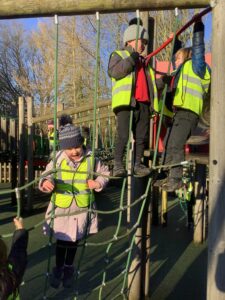
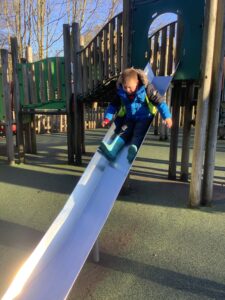
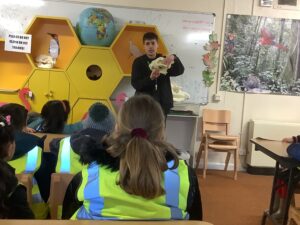
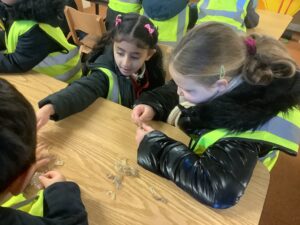
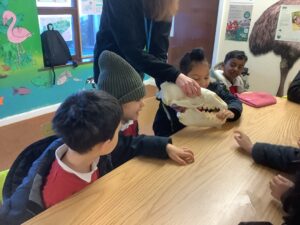
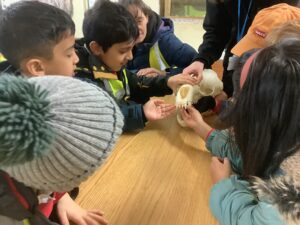
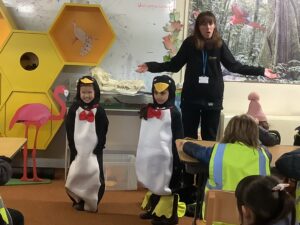
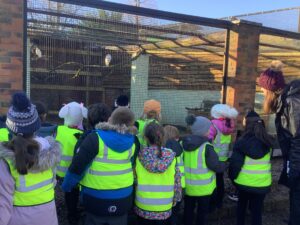
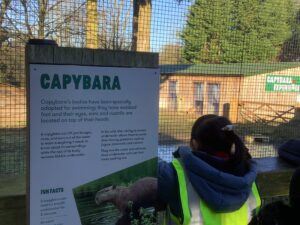
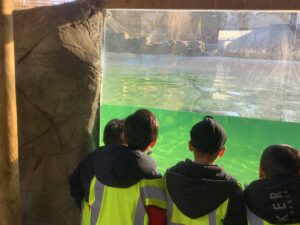


Help at Home by:
In our latest Living and Learning lessons, we’ve been learning about safety around medicines and household products.
We considered:
What are medicines?
What do they look like?
How are they used?
Why do people use them?
The children had lots to share about their experiences of taking different medicines and what they are used for.
Then, we considered safety rules at home and how to keep themselves and others safe.
Our medicines are in a high cupboard so my sister and I can’t reach them.
An adult has to give you medicine.
These things are kept in a locked cupboard in my house.
We then looked at some scenarios where we recognised the danger and suggested some ideas for what could be done to keep the people safe

The baby might drink the cleaner.
I would take the baby away.
I would tell a grown up straight away.

They are adult tablets and they should leave them alone.
They should have been somewhere where children can not get them.
Help at home: please reinforce this key safety message at home. Make sure your child is aware of possible dangers at home, such as medicines and household products, and how to seek help if they need it.
This week in Maths, we have been looking at odd and even numbers. We know that even numbers are made of 2s and odd numbers have an odd one. We have been counting forwards and backwards in odd and even numbers. In our number fluency sessions we have been investigating how odd and even numbers can be made. We discovered that even numbers can be made from 2 odd parts or 2 even parts and that odd numbers can only be made by 1 odd part and 1 even part.


We used this learning in our main maths lesson to add and subtract 2 from even numbers. We know that when you add 2 to an even number the answer is the next even number. We also know when you subtract 2 from an even number the answer is the previous even number. We worked really hard using odd and even numbers!


Help at home by talking to your child about odd and even numbers. Can they tell you which numbers are which? Can you add and subtract 2 from even numbers?
This week’s spellings are more words from the common exception word list.
says
our
once
house
where
These spellings will be tested on Friday 17th January.